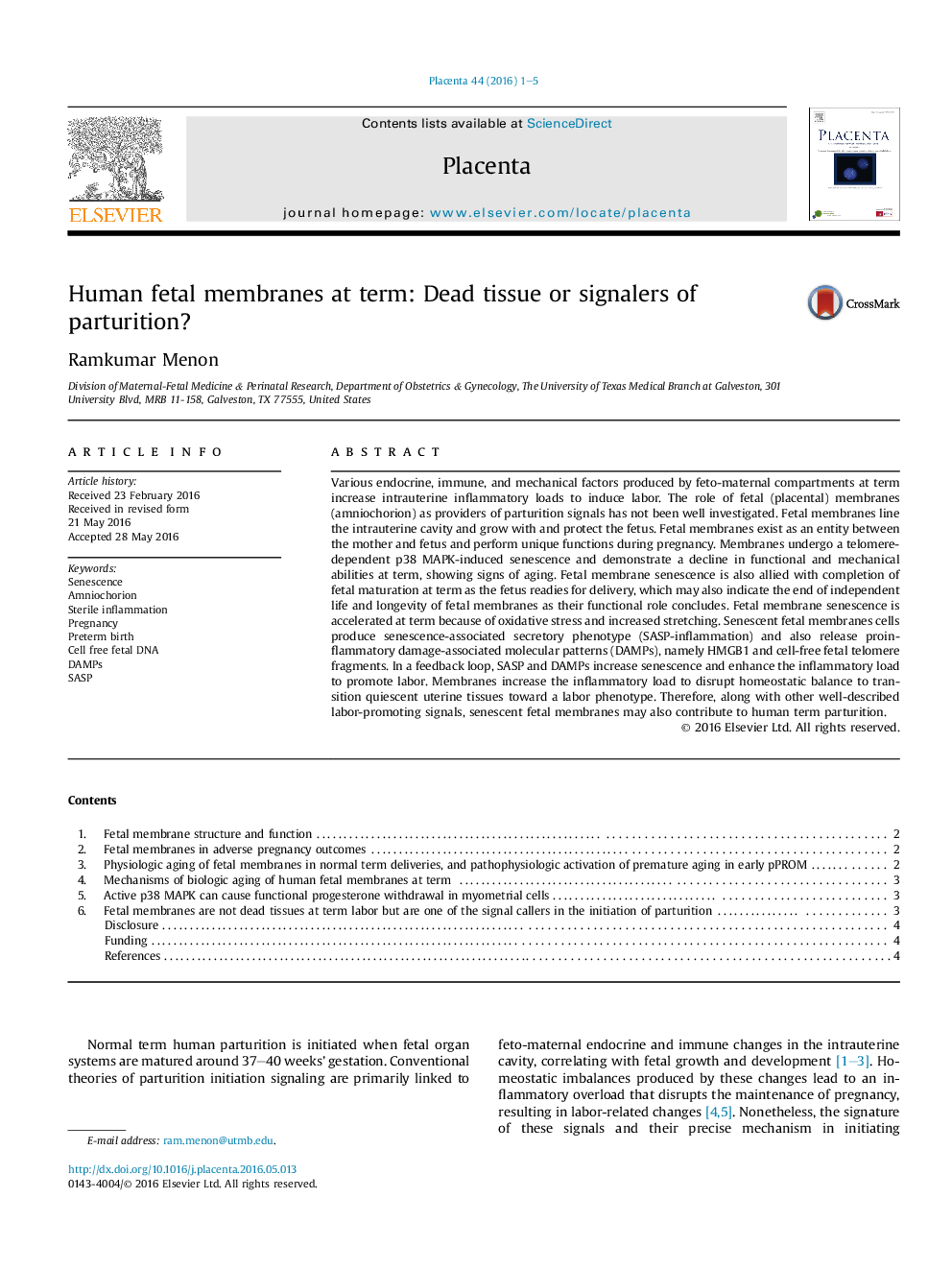| Article ID | Journal | Published Year | Pages | File Type |
|---|---|---|---|---|
| 5894323 | Placenta | 2016 | 5 Pages |
â¢The fetal membranes undergo a telomere dependent senescence at term.â¢Fetal membrane senescence is a mechanism indicating aging.â¢Senescence is associated with sterile inflammation.â¢Sterile inflammatory mediators enhance uterine inflammatory load and produce labor associated changes.â¢Fetal membrane senescence is one of the mechanistic signal for parturition.
Various endocrine, immune, and mechanical factors produced by feto-maternal compartments at term increase intrauterine inflammatory loads to induce labor. The role of fetal (placental) membranes (amniochorion) as providers of parturition signals has not been well investigated. Fetal membranes line the intrauterine cavity and grow with and protect the fetus. Fetal membranes exist as an entity between the mother and fetus and perform unique functions during pregnancy. Membranes undergo a telomere-dependent p38 MAPK-induced senescence and demonstrate a decline in functional and mechanical abilities at term, showing signs of aging. Fetal membrane senescence is also allied with completion of fetal maturation at term as the fetus readies for delivery, which may also indicate the end of independent life and longevity of fetal membranes as their functional role concludes. Fetal membrane senescence is accelerated at term because of oxidative stress and increased stretching. Senescent fetal membranes cells produce senescence-associated secretory phenotype (SASP-inflammation) and also release proinflammatory damage-associated molecular patterns (DAMPs), namely HMGB1 and cell-free fetal telomere fragments. In a feedback loop, SASP and DAMPs increase senescence and enhance the inflammatory load to promote labor. Membranes increase the inflammatory load to disrupt homeostatic balance to transition quiescent uterine tissues toward a labor phenotype. Therefore, along with other well-described labor-promoting signals, senescent fetal membranes may also contribute to human term parturition.
